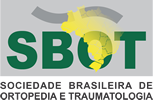Dados do Trabalho
Título do Caso / Title of Case
Major upper limb replantation of forearm with prolonged ischemia time: What can go wrong
Resumo / Abstract
Objective: Major upper limb replantation represents a life-threatening injury, associated to high-energy trauma. The decision whether to do the replantation or amputation should be based on clinical conditions of patients and the cold ischemia time. A recurrent problem is the time elapsed between the major limb amputation and the moment the patient is able to reach the Hospital. The objective of this study is to compare short-term outcomes of major limb replantation of forearm and identify possible complications that could be avoided.
Methods: Three major upper limb replantation of forearm performed in 2016 and 2017, by the same microsurgeon. Descriptive analysis of intraoperative data and complications were done
Case one: 30 years female, right forearm avulsion motorcycle accident, 8 hours of cold ischemia. Osteosynthesis with plate and screw fixation was done. Revascularization was successful with brachial artery and two venous anastomoses, without graf. During follow-up extensive muscle necrosis at the stump was debrided. At the third week postoperative, two additional debridment surgeries surgeries were performed due to infection, when at four weeks postoperative it was decided to perform the amputation. Case two: 37 years, male, right forearm avulsion work-related accident with 9 hours of cold ischemia. Due to prolonged ischemia time, the stump muscle was completely debrided and preserved only tendons. Ulnar artery was anastomosed to distal radial artery and two venous anastomoses were performed, without graft. T
Case 3: 24 years patient with a right forearm avulsion work-related accident, 9 hours of cold ischemia. Due to prolonged ischemia time, the muscle at stump was completely debrided and preserved only tendons. Plate and screw fixation was done. Ulnar artery and two venous anastomoses were performed, without graft. At 2 weeks, due to skin necrosis with close proximity to microanastomoses, an anterolateral thigh flap was performed.Conclusions: Few Hospitals perform major limb replantation in our country and due to long distances between the site of accident and transportation to the Hospital, usually, the major limb amputation exceeds the accepted cold ischemia time of 6 to 8 yours. After multidisciplinary evaluation of the patients, a temporary artery and venous shunt is performed to reduce further ischemia time. We recommend that, in those patients with prolonged ischemia time, complete muscle debridement be performed
Área
CASO CLÍNICO
Instituições
UNIVERSIDADE DE SÃO PAULO - São Paulo - Brasil
Autores
RAQUEL BERNARDELLI IAMAGUCHI, GUSTAVO BERSANI SILVA, ALVARO BAIK CHO, TENG HSIANG WEI, MARCELO ROSA DE REZENDE, RAMES MATTAR JR
Patrocinador Master


Patrocinador Ouro












